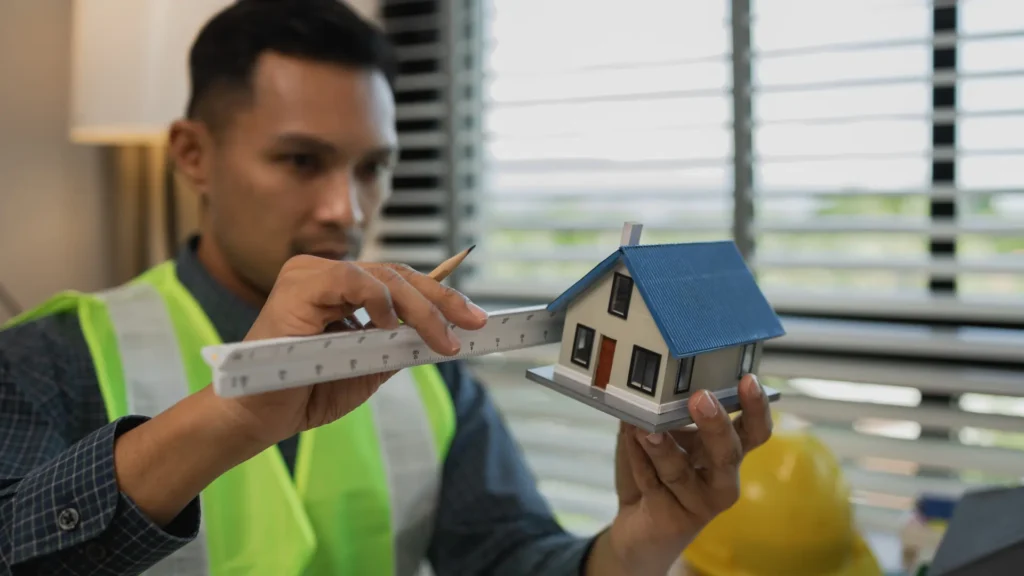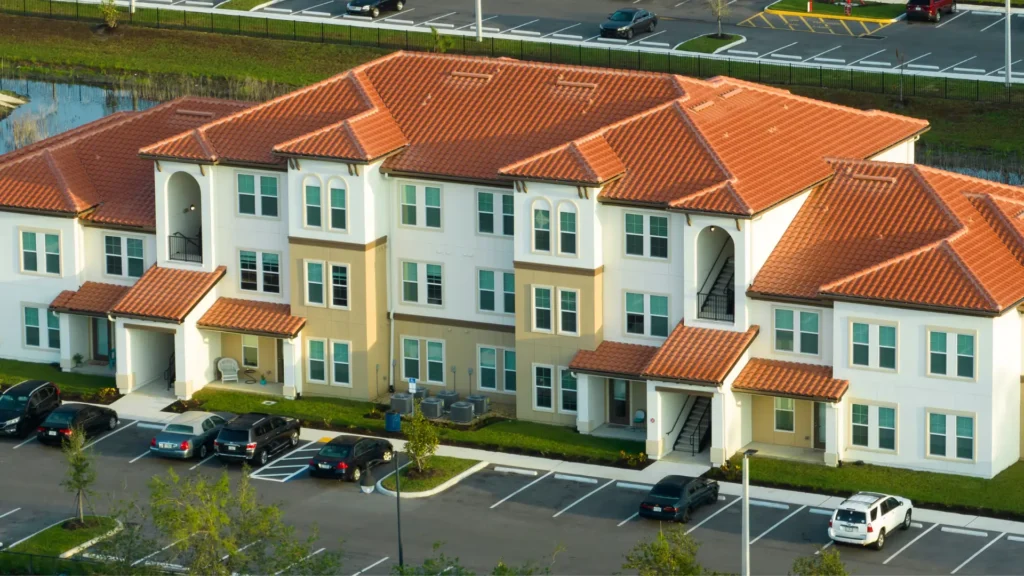Understanding the NSPIRE scoring methodology is crucial for property managers and housing authorities aiming to stay compliant with HUD standards. This guide will walk you through how the NSPIRE scoring system works, what factors impact your property’s score, and how to maintain a high rating. Whether you’re preparing for an inspection or working to improve your score, this post will provide the insights you need to navigate the NSPIRE inspection process effectively.

Understanding the NSPIRE Scoring Methodology
What is NSPIRE Scoring?
The NSPIRE scoring methodology is the system used by the Department of Housing and Urban Development (HUD) to evaluate the physical condition of properties. It assesses factors like safety, plumbing, electrical systems, and general maintenance. Properties are scored based on how well they meet NSPIRE standards, with higher scores indicating better compliance with HUD guidelines.
For more detailed information on the NSPIRE program, check out the NSPIRE Landlord Resources.
Key Factors That Impact Your NSPIRE Score
Your NSPIRE inspection score is determined by various factors that assess the overall condition of the property. These factors include:
- Safety and Habitability: Ensuring that fire exits, smoke detectors, and emergency lighting are functioning and safe.
- Plumbing and Electrical Systems: These systems must be in working order, with no leaks or exposed wires.
- General Maintenance: Regular upkeep of the property, including landscaping, paint, and interior conditions.
The NSPIRE standards are designed to ensure that properties provide a safe, healthy, and habitable environment for tenants. For a complete breakdown of the NSPIRE standards, visit NSPIRE Standards.

How NSPIRE Scores Are Calculated
The NSPIRE Inspection Categories
During a NSPIRE inspection, the inspector will evaluate specific categories that contribute to the overall score. These categories include:
- Health and Safety: This covers all aspects of the property that could pose a risk to tenants’ health and safety.
- Plumbing: Issues like leaks, water pressure, and water heater functionality are assessed.
- Electrical and HVAC Systems: These systems are reviewed to ensure they are up to code and functioning properly.
Each of these areas is assigned a weight, and the combined score reflects how compliant the property is with HUD’s NSPIRE standards.
The Weight of Each Category in the Final Score
Each inspection category contributes differently to the overall NSPIRE score. For example:
- Health and Safety: Often holds the highest weight due to its critical importance in tenant well-being.
- Plumbing and Electrical: These are equally important but may have a slightly lower weight.
- General Maintenance: While important, it may carry a lower weight compared to life-safety issues.
Understanding how each category impacts your NSPIRE score will help you prioritize areas for improvement before the official inspection.

How to Improve Your NSPIRE Score
Identifying Areas for Improvement
If your property has failed a NSPIRE inspection or you’re preparing for one, the first step is to identify areas that need improvement. Begin by:
- Conducting a self-assessment of your property, focusing on key areas such as plumbing, safety features, and electrical systems.
- Using pre-inspection services like NSPIRE pre-inspections to get an expert evaluation of potential problem areas. Learn more about how NSPIRE pre-inspections can help you stay compliant by visiting NSPIRE Pre-Inspections.
Best Practices for Maintaining Compliance
Once areas for improvement have been identified, follow these best practices to maintain compliance:
- Regular Maintenance: Schedule routine checks for plumbing, HVAC, and electrical systems to ensure they’re in working order.
- Proactive Repairs: Address minor repairs before they turn into bigger issues that could negatively impact your score.
- Safety First: Ensure all safety equipment (e.g., smoke detectors, fire exits) is functioning correctly and up to NSPIRE standards.
By focusing on these areas, property managers can significantly improve their NSPIRE score and reduce the likelihood of failing future inspections.
Understanding the NSPIRE Scoring System and Its Impact on HUD Funding
The Role of NSPIRE Scores in Retaining HUD Funding
NSPIRE scores play a critical role in determining whether a property retains eligibility for HUD funding, including Housing Choice Vouchers. A high NSPIRE score demonstrates that the property is in good condition, meets safety and habitability standards, and is compliant with HUD regulations. When a property fails to meet these NSPIRE standards, it risks losing valuable financial support, which can directly affect operations and tenant services.
Failing to achieve compliance could result in the loss of federal assistance, making it more difficult to maintain affordable housing. For property managers, it’s vital to stay ahead of potential compliance issues to prevent a drop in NSPIRE scores and to ensure continued eligibility for funding.
To learn more about how NSPIRE standards are tied to funding, visit NSPIRE Program Overview.
How NSPIRE Scores Impact the Frequency of Inspections
Properties with low NSPIRE scores face the risk of more frequent inspections, which can be both costly and time-consuming. When properties fall below NSPIRE compliance thresholds, inspectors are more likely to schedule additional visits to ensure that deficiencies are being corrected. This not only adds to operational costs but can also result in ongoing disruption for tenants and property management teams.
By maintaining high NSPIRE scores, property managers can reduce the likelihood of frequent inspections and associated costs. Regular maintenance and adherence to NSPIRE standards can ensure that inspections remain periodic, saving valuable time and resources.
NSPIRE Scores and Tenant Retention
NSPIRE-compliant properties tend to offer superior living conditions, which play a crucial role in tenant retention. Properties that consistently meet NSPIRE standards provide tenants with a safe, well-maintained, and comfortable environment, making them more likely to stay long-term.
Regular inspections and timely repairs that align with NSPIRE standards help property managers keep their buildings in top condition, increasing tenant satisfaction and reducing turnover. When tenants see that their living conditions are prioritized and regularly maintained, they are more likely to renew leases, ultimately improving the property’s stability and financial performance.

How NSPIRE Inspections Contribute to Property Value and Marketability
The Connection Between NSPIRE Scores and Property Value
A high NSPIRE score directly correlates with increased property value. Properties that meet NSPIRE compliance standards are generally better maintained, more attractive to potential tenants, and more marketable in the real estate market. These properties often see higher occupancy rates and can command higher rent prices, thanks to their superior condition.
For property owners, using NSPIRE compliance as a marketing tool can attract higher-quality tenants, increase property appeal, and make the property stand out in a competitive rental market. The value-added benefits of maintaining NSPIRE compliance far outweigh the costs of staying compliant.
For more information on how NSPIRE standards impact your property value, check out NSPIRE Standards.
Attracting Investment Through NSPIRE Compliance
Investors tend to prefer properties that are NSPIRE-compliant because they represent a lower risk. Well-maintained properties with high NSPIRE scores are seen as more stable investments, providing a reliable income stream and long-term appreciation. By keeping properties in compliance with NSPIRE standards, property managers can make their properties more attractive to potential investors, boosting their marketability and investment potential.
Common NSPIRE Scoring Pitfalls to Avoid
Why Properties Fail NSPIRE Inspections
Several factors commonly lead to failed NSPIRE inspections. Some of the most frequent issues include:
- Safety Hazards: Missing smoke detectors, faulty wiring, or blocked fire exits.
- Plumbing Leaks: Leaks in pipes or water pressure issues.
- Poor Maintenance: Neglecting minor repairs that escalate into larger problems.
To avoid these issues, make sure to conduct regular property maintenance and address any NSPIRE compliance issues promptly.
How to Address Inspection Failures Quickly
If your property fails a NSPIRE inspection, don’t panic. Address the issues quickly by:
- Scheduling immediate repairs with trusted contractors.
- Documenting repairs and updates for future inspections.
- Requesting a re-inspection after all issues have been resolved.
If you need assistance with re-inspections or ensuring compliance, NSPIRE Experts offer expert guidance and support. Visit NSPIRE Inspector Shadowing to learn how we can help.
Preparing for NSPIRE Inspections: A Property Manager’s Checklist
Key Items to Check Before Your NSPIRE Inspection
Before the NSPIRE inspection, property managers should perform a thorough self-assessment. Some key areas to check include:
- Plumbing: Check for leaks, water pressure, and functionality of water heaters.
- Electrical Systems: Ensure all wiring, outlets, and circuits are in working order.
- Safety Features: Inspect fire exits, smoke detectors, and emergency lighting.
- General Maintenance: Review the condition of flooring, walls, and common areas.
Having a checklist and conducting regular inspections will help property managers identify any issues before the official inspection and ensure the property remains NSPIRE-compliant.
For a comprehensive checklist, download our NSPIRE Pre-Inspection Brochure.
How to Prepare Your Team for the NSPIRE Inspection
To ensure success during the NSPIRE inspection, property managers must prepare their maintenance teams. This involves:
- Training staff on NSPIRE standards and what inspectors look for.
- Ensuring timely repairs for any deficiencies before the inspection.
- Documenting repairs and improvements made for transparency.
Proper preparation minimizes the risk of failing an inspection and ensures that the team is aligned with the NSPIRE standards.

How NSPIRE Experts Can Help You Improve Your Score
The Role of NSPIRE Experts in Scoring
NSPIRE Experts can assist property managers in improving their NSPIRE score by offering detailed pre-inspections, expert guidance, and repair recommendations. Our team helps identify deficiencies early and provides actionable advice to bring your property into full compliance with NSPIRE standards.
NSPIRE Pre-Inspection Services to Ensure Compliance
Our NSPIRE pre-inspection services help you identify potential issues before the official inspection. This proactive approach ensures that your property is fully compliant with NSPIRE standards, reducing the risk of failing your inspection. For more details, download our NSPIRE Pre-Inspection Brochure.
Conclusion: Mastering the NSPIRE Scoring Methodology for Property Success
Key Takeaways for Property Managers
Mastering the NSPIRE scoring methodology is essential for property managers looking to maintain HUD funding, improve tenant safety, and enhance their property’s value. By understanding the inspection categories, addressing key areas of concern, and working with experts, you can significantly improve your NSPIRE score and avoid penalties.
For further help with understanding NSPIRE scoring and improving your compliProvidance, schedule a consultation with NSPIRE Experts today.
